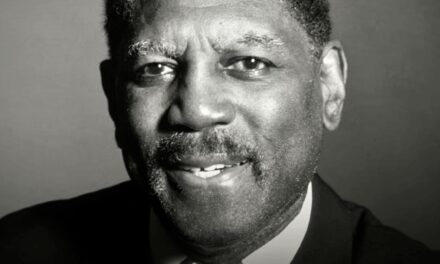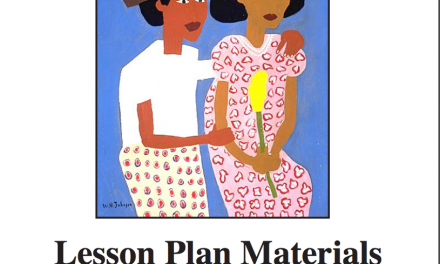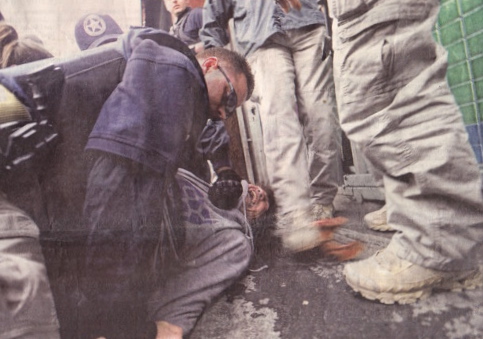By Lester Grinspoon, MD In 1966 through a shared involvement in anti-Vietnam War activities, I met the astronomer Carl Sagan and we eventually became close friends. He was the first person I had ever met who used marijuana.
As a sometimes arrogant young doctor who believed he knew something of the dangers of cannabis, I warned him of its harmfulness and urged him to stop using it. He took another puff from his joint and then held it toward me and said, “Lester, have a puff, it’s harmless and you will enjoy it.” 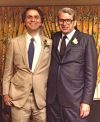
As I met more of his friends, and they were not unsophisticated people, I discovered that most were also cannabis users. This began to trouble me. In fact, it compelled me to question the basis for my firmly held belief in its harmfulness.
By 1967 I found myself in the Countway library searching for the medical and scientific basis for the marijuana prohibition enacted in 1937.
It was not long before I had my first cannabis epiphany: marijuana was, in fact, remarkable for its lack of toxicity, and the harmfulness surrounding it was not to be found in its psychopharmacology, but rather in the way we as a society were dealing with people who use it.
At that time marijuana was responsible for about 300,000 arrests annually. (That figure would rise to its apogee of almost 900,000 in 2011. It is declining and in 2014 was slightly under 700,000, 89% for mere possession.)
Dr. Jack Ewalt was Professor of Psychiatry at the Harvard Medical School and Superintendent of the Massachusetts Mental Health Center when I joined the hospital staff and the medical school faculty in the department of psychiatry in 1961. This psychiatric hospital was one of the seven fiefdoms which taken together comprised the Harvard Department of Psychiatry. The other sub-departments were located at other Harvard teaching hospitals including Peter Bent Brigham, Beth Israel, Massachusetts General, and McLean.
I am not certain of the year, my best guess is 1975, when Jack Ewalt nominated me for early promotion to full professorship. By that time I had published approximately 75 papers and articles, and two books.
The first was “Schizophrenia: Pharmacotherapy and Psychotherapy,” written by myself, Jack Ewalt and Richard Shader (Williams and Wilkins Co., 1972). Technically, it was my first book but because of a long delay in the receipt of one chapter by one of the junior authors, its publication date was later than that of my second book, “Marihuana Reconsidered” (Harvard University Press, 1971, 2nd edition 1978).
I became fascinated by cannabis during my initial foray into the literature for a number of reasons. Like almost all my countrymen, including physicians, I had been brainwashed by the United States government into believing that it was a very harmful substance. The subject now began to smack of the phenomenon described by Charles Mackay in his mid-19th century book, “Extraordinary Popular Delusions and the Madness of Crowds.”
It did not occur to me to write a book on the subject. What I did write was an 80-page paper which was published in the International Journal of Psychiatry in 1968. Soon thereafter a shorter version appeared in Scientific American. The latter piece attracted a huge amount of attention (my wife and I, listening to the 11 PM news, “heard all about it”).
Within a week or two I received telephone calls from three publishers who wished to see me to discuss the possibility of a book. I decided then to write the book for several reasons. The subject had captured my interest and was very much in need of a thorough review; and it was the only aspect of my work that my 10-year-old son Danny —who had been diagnosed with acute lymphoblastic leukemia in 1967— expressed interest in.
Having a choice of publishers, I decided on Harvard University Press, which agreed to give me an accelerated date for publication if I would agree to provide the manuscript to the press quickly. As promised, I had a hand-bound copy for Danny on March 24, 1971, the date we had agreed upon.
There was a short-lived early wrinkle: a few weeks after I had come to an agreement with the editors at Harvard University Press, their “Board of Syndics” rejected the book proposal as too controversial. Until that moment I was unaware of the existence of this board, which must approve every book published by the press. 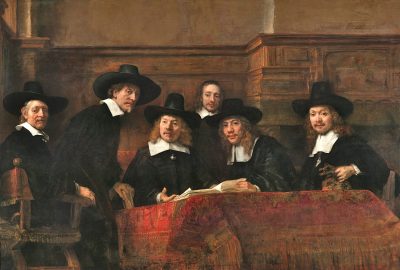 An image of the Rembrandt painting “Syndics of the Cloth Guild” came to mind: a group of serious-looking, long-haired men sitting around the table, exuding caution and conservatism. It was the first instance of academic resistance to my work in this area.
An image of the Rembrandt painting “Syndics of the Cloth Guild” came to mind: a group of serious-looking, long-haired men sitting around the table, exuding caution and conservatism. It was the first instance of academic resistance to my work in this area.
I could have signed on immediately with a trade publisher that offered the prospect of selling more books. But I believed that a conservative, prestigious press would lend more credibility and influence to a book that promised to be quite contentious. The director of the press was undaunted; he believed that he could persuade the Syndics to reverse their decision. And so he did. “Marihuana Reconsidered” was published in June, 1971.
During the time that I was working on the manuscript, I explored every aspect of the literature on marijuana, including the nature of the “high” as recorded by such writers as Theophile Gauthier, Charles Baudelaire and other members of the 19th century Parisian Le Club Des Haschischins, and the Americans Bayard Taylor, Fitz Hugh Ludlow, Allen Ginsberg and Carl Sagan (Dr. X in “Marihuana Reconsidered”).
I had a growing realization that this substance was not only remarkably non-toxic but is also capable of producing a mild altered state of consciousness which appeared to be quite interesting -and I decided that I would like to give it a try.
However, I did not want the book to have an “n-of-one” bias. It was difficult enough to try to produce an objective statement on this subject and I did not want to introduce this as a confounding variable.
I also anticipated the possibility that the book would be successful and if so, I would be invited to be a witness at both legislative hearings and court proceedings and I might be asked, as a legitimate credentialing question, “Doctor, ‘have you ever used marijuana?’” And I wanted to be able to say “No.” As it happened, this is exactly the way it turned out.
“Marihuana Reconsidered” received a front page review in the New York Times Sunday Book Review under the title “The Best Dope on Pot so Far,” and it was widely reviewed in both medical and lay publications. These reviews were, with rare exceptions, positive. The demand was such that the Press published a number of reprints and a paperback. They also sold paperback rights to Bantam Books which produced a large printing.
Interest in this book led to invitations to appear on many different talk shows from Good Morning America to the Barbara Walters Show. The latter stands out because it was the only time I was asked on air if I had ever personally used marijuana. By then I had.
I was the last of her four guests to be asked. All three of them replied, “No.” The first respondent was a fellow faculty member with whom I had smoked on a number of occasions. The second had trained in my department, and during a conversation had shared his own personal experience. Finally, when Barbara Walters asked “And how about you, Dr. Grinspoon; have you ever smoked marijuana?’” I replied, “Yes, I have and I do smoke marijuana.” That was a jaw-dropper for Barbara Walters and probably a lot of other people.
I had postponed having my first experience with cannabis until 1973. From the very beginning I was open about my use. There was a stigma attached to marijuana use (much more in 1973 than presently), but being dishonest about it would have made me uncomfortable.
Using marijuana proved instructive. Initially, I believed that there were two large, somewhat conflated, categories of its usefulness: Recreation and Medicine. In time I identified a third category: Enhancement. Marijuana can enhance a variety of human capacities. I believe I have profited in all three of these domains.
I also began to think about what it would take to rescind the marijuana prohibition which was responsible for millions of arrests and unspeakable misery. It seemed to me that behind every kind of prejudice or categorical discrimination there was some stereotyping. Those who use marijuana are commonly referred to as “potheads” which evokes a picture of young, unkempt, lazy ne’er-do-wells.
As I became involved in marijuana-related activities (talks, grand rounds, meetings, television and radio appearances, etc.) I was identified an “activist,” which is looked down on in the academic world, as if it were a result of bias rather than knowledge and understanding.
So in 1975 when Jack Ewalt announced that he was going to put me up for early promotion, I was pleased and grateful. I went about revising my curriculum vitae to fit the style demanded by the Promotions Committee and happily anticipated the day when the decision would be made.
That day came about a month or so later when Dr. Ewalt’s secretary called and asked me to come to his office. As we exchanged greetings there was something in his voice which suggested bad news.
“They turned you down.”
“They did?” (With constrained surprise)
“Yes.”
Can you tell me why?”
“They like your work in general, and they loved the schizophrenia book, but they hated ‘Marihuana Reconsidered.’”
“They hated it? What did they hate about it?” (I was stunned.)
“They said it is too controversial”
“Too controversial! What should that have to do with it? Aren’t we all in the Academy? What did they think of the scholarship?”
Jack then held out his hands toward me with his palms up, “Hey, don’t blame me; I’m just the messenger.”
I found this news difficult to believe! In addition to “controversy,” could they also have been influenced by the fact that I was then considered to be an “activist” in this area and did not hide my personal use?
I found it difficult to believe that any members of that committee would be aware of my activism except for radio and television appearances. I doubt that any of them had seen me quoted in High Times, or knew that I was on the board of NORML (the National Organization for the Reform of Marijuana Law). And, while I am honest about my personal use, I am not provocative.
As I was about to leave his office, profoundly disappointed and thoroughly confused, Jack said, “They asked me to ask you what you plan to work on in the future.”
To this day I do not know whether my quick answer came largely from disappointment alloyed with anger or an instinct that I should avoid answering that question, or both. But I replied, even though I was already involved in my next project, “I don’t know; I’m an intellectual will-o’-the-wisp and I can’t say.”
I wondered whether the Promotions Committee was sending me a signal to “Keep your nose clean and don’t get involved in controversial areas.” In fact, the project I was already involved in would soon be published by Harvard University Press: “The Speed Culture: Amphetamine Use and Abuse in America” by myself and Peter Hedblom.
That book was not considered controversail (except by pharmaceutical manufacturers) and it was largely responsible for the Senate hearings which ultimately led to restrictions on the prescribing of amphetamines. I was the lead witness at those hearings, which were chaired by Sen. Gaylord Nelson of Wisconsin.
I worked at turning my disappointment over being denied promotion into something useful: I decided to skip as many faculty meetings as I could. This saved a lot of time that I could devote to research and writing, but resulted in my becoming somewhat alienated from the faculty.
Fortunately, it was at about that time that I met James B. Bakalar, with whom I began to work. He was co-author for subsequent books and years later succeeded me as editor of The Harvard Mental Health Letter. Brown-bag lunches in my office with “Jake” were always looked forward to.
The “Super-Chief”
In 1991 Dr. Joseph Coyle was brought to McLean Hospital from John Hopkins to fill a newly established position of “super-chief,” to whom all the chiefs of Harvard’s Psychiatry fiefdoms would report. Upon Coyle’s arrival in Boston, each of the sub-departments held a meeting to introduce him to the faculty. I was taken aback when, upon our being introduced, he said something to the effect of: “Oh, I know your name; I am acquainted with your book [not sure if he said ‘read’] on psychedelics and I didn’t like it.” I was shocked that he would say this, let alone in front of my fellow faculty members. It predicted a stormy relationship over the following years.
In 1995 I announced my intention to become emeritus in the year 2000. It was some time after that that I heard via the grapevine that the Promotions Committee was, after more than 20 years, reconsidering my promotion. Once again, I was very pleased by the prospect.
It was in November, I think, that I heard from my new chief, Dr. Ming Tsuang, that the committee had approved the promotion.
He signed it immediately and sent it over to Coyle, whose signature was required as well. Over the next three or four months Tsuang called Coyle a number of times to remind him that my promotion was being held up by his failure to sign off on it.
Finally, after the new year began, Coyle told Tsuang that he was going to wait for the new dean to arrive on July 1st as he now believed this promotion should be countersigned by the dean. There was no precedent for this requirement.
Joseph Martin, MD, became the dean of Harvard Medical School on July 1, and within about 10 days I heard via the grapevine that he agreed with Dr. Coyle that my promotion should be vetoed. Dean Martin, as far as I know, knew nothing of me or my work and he apparently did not believe it was important enough to meet me or even talk to me on the phone before his veto.
I left my office in 2000 with mixed feelings. I had very much enjoyed my work and am pleased with what I accomplished, but my feelings toward Harvard Medical School were mixed. I loved HMS as a student, particularly because it had such a large, impressive faculty, readily available to students. It was with help from a faculty mentor that I had published my first medical paper as a first-year student.
Also during my first year, I was one of two students awarded a scholarship which exceeded the cost of tuition for my remaining three years. I had been borrowing money for my education from a bank that had required me to take out an insurance policy on my life; what a relief that scholarship afforded me!
My sense of financial indebtedness to Harvard was more than resolved when in 1982 I donated to the Department of Psychiatry at the Massachusetts Mental Health Center my 10% royalties for editing a new publication, an annual Review of Psychiatry published by the American Psychiatric Association.
I had conceived the idea of an annual review, put it together, and edited it for the first three years. Each volume was between five and six hundred pages, and coveredtopics such as schizophrenia, depression etc. Each topic was addressed by five of the leading experts in that area.
As chairperson of the Scientific Program Committee of the APA, I chose the authors. The Review of Psychiatry was quite successful and sold thousands of copies annually at more than $50/per.
Several years later I proposed a publication that would be called “The Harvard Mental Health Letter.” It was approved by the Harvard Publications Committee and within a few months James B. Bakalar and I began to produce it. Against all expectations it was “in the black” in the first year and over the course of the next 15 years generated several million dollars for the Harvard Medical School.
Since the year 2000, I have continued to write from my home office. Over the ensuing years I heard little from HMS other than perfunctory announcements of meetings and speakers, and appeals for funds. Then, in 2013 I received an invitation to write a short piece on cannabinopathic medicine for Harvard Medicine, a magazine published by the medical school.
For a moment I excitedly thought that, finally, the medical school was catching up with a modern, data-based understanding of cannabis as a medicine and that perhaps I was being rehabilitated.
But, alas, the piece was to be published alongside one which would express a counter view by Dr. Kevin Hill, who heads up the Drug Rehabilitation Center at McLean.As though I were writing on evolution and that demanded a companion piece on creationism!
Shortly thereafter, I was invited to give a talk on marijuana as a medicine at the “Talks at Twelve,” a program held at noon to facilitate attendance by people from the medical school proper and all of the associated teaching hospitals.
Again, I was disappointed to learn that I would have only a fraction of the hour because there was to be a “counter” presentation by Kevin Hill. Each of us was allowed 20 minutes so that there would be time for questions. The event took place at the Armenise Ampitheater, and was billed as “Medical Marijuana: What are the Facts?”
The auditorium was overflowing, mostly with younger people and very few of my generation. However, two of the latter made their presence known during the question period. A senior pediatrician expressed, somewhat angrily, his belief that cannabis was dangerous to young people because brain development continued until the early twenties. For that reason, he said, what I was doing was harmful to young people because I was reducing their fear of marijuana. It wasn’t exactly a question but I replied that I had never advocated its legal availability to people under 21.
The other older person was sitting in the second row and could barely contain herself in attracting the attention of the chair.She just stood up and began explaining at length how harmful my position was. I later learned that she was Dr. Bertha Madras, Professor of Neurobiology and a former Deputy Director for Demand Reduction in the White House Office of National Drug Control Policy, a Presidential appointment in the George W. Bush Administration.
The chair terminated the program on the hour but asked us if we could stay to answer questions. Two people came forward to ask Dr. Hill questions and he was through in a couple of minutes. There were several dozen enthusiastic young to middle-aged people in line who wished to ask me a question, just say hello, autograph a book, or have a cell-phone picture taken of the two of us.
For me, this 35-minute epilogue made the experience seem very worthwhile. It gave me hope that with the passing of my generation, the anti-cannabis culture, which permeates Harvard Medical School and allopathic medicine in general, will disappear and medical students and physicians will have the opportunity to learn what this remarkably non-toxic and versatile medicine has to offer.
I continue to believe that Harvard Medical School is a great institution. But it disappointed me when it failed itself in violating its obligation to academic freedom.

